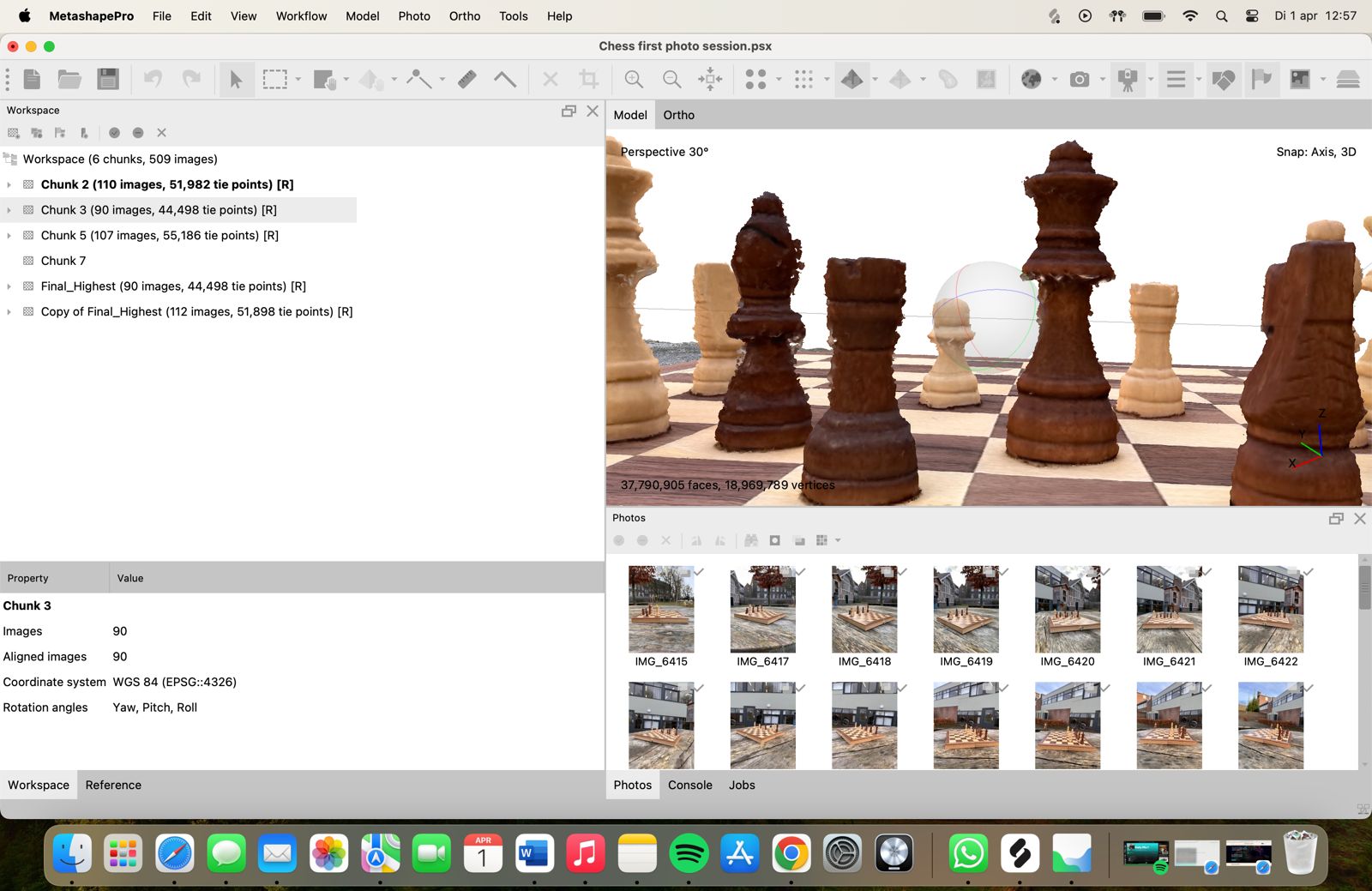
We digitized the board itself in Agisoft Metashape and found that this went pretty well. The texture and surface of the wooden chessboard were well-suited to conversion to the software, and the initial result was so good that very little adjustment had to be made.
The chess pieces, though, were harder to digitize. Tracing their rounded forms and minute details was not easy — pieces turned out misshapen or incomplete. We decided to use pre-existing 3D chess pieces that we would overlap onto the digitized board after several attempts at modeling them ourselves. This as a compromise worked because we still maintained the model's integrity without the doubt of the pieces not being visually uniform and clean.

.jpeg)
Multimedia references in the 3D Environment:
Sketchfab
The greatest challenge was the chess pieces. They were miniature, shiny, and rounded, which presented a problem to take an accurate photograph of them. We tried adjusting camera settings, lighting levels, and angles of capture—but still, the results were patchy.
.png)
Converting to imported 3D parts was a strategic decision that ultimately saved time and improved our final product. The other challenge was making the pieces line up with the board in Voyager—this required accurate scaling and positioning to get it just right for accuracy and aesthetic.